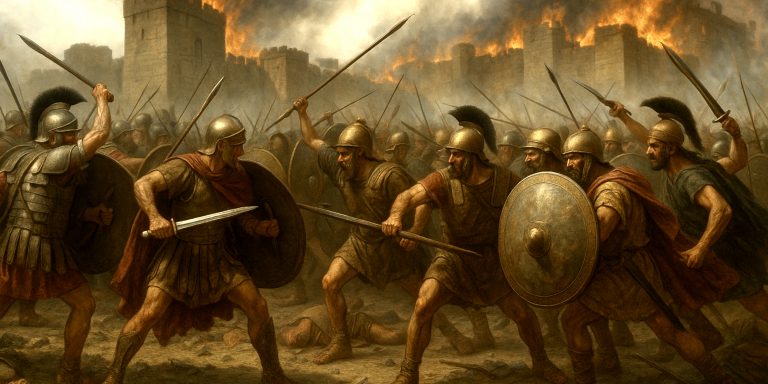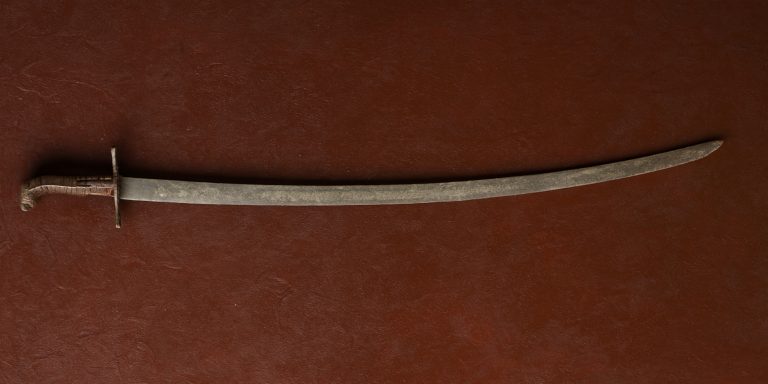
If early medieval history is a fog, then Hengest is one of the shapes moving faintly within it. Sometimes he’s hailed as the first Saxon king of Kent, other times dismissed as a half-legendary warlord conjured up by bards who never quite met a fact they couldn’t bend. Either way, Hengest looms large in the murky space between myth and history, somewhere between the twilight of Rome and the dawn of England.
As a historian, I find him both maddening and irresistible. You can’t fully believe him, but you can’t quite ignore him either.
Historical Background
Most of what we think we know about Hengest comes from early sources like Bede’s Ecclesiastical History of the English People and the Anglo-Saxon Chronicle. Both place him in the 5th century, around the time when Britain was struggling after the Roman withdrawal. Into that power vacuum sailed Hengest and his brother Horsa, supposedly from Jutland or Saxony, leading mercenaries hired by the British ruler Vortigern to help fend off Pictish raids.
It went about as well as you might expect when you invite armed men to dinner.
The Arrival in Britain
According to the traditional story, Vortigern granted Hengest and Horsa land in Kent in exchange for military service. The two brothers proved effective fighters, but their appetite for land grew quickly. When reinforcements arrived from across the sea, the guests became conquerors.
It’s here that legend overtakes history. Bede’s account suggests that after a dispute with Vortigern, Hengest and his followers turned against the Britons, paving the way for the Saxon foothold that would one day become England.
Archaeological evidence in Kent does at least confirm early Saxon settlement in this era, though whether Hengest himself was involved is impossible to say.
The Battle and Betrayal
The most dramatic episode associated with Hengest is the so-called “Night of the Long Knives”, when, during a supposed peace meeting with the Britons, the Saxons concealed daggers in their boots and slaughtered their hosts.
It sounds theatrical, and it probably is. Early chroniclers adored a good moral tale. Still, the story captures the sense of betrayal and upheaval that marked this chaotic century. Whether or not the banquet massacre happened, it symbolises the irreversible moment when the Saxons ceased to be mercenaries and became rulers.
Was Hengest Real?
Scholars remain divided. Some argue that “Hengest” (meaning “stallion” in Old English) might have been a title rather than a name, a kind of symbolic figure representing conquest and virility. Others think he was based on an actual leader whose deeds became exaggerated over time.
Personally, I suspect there was someone, a chief, perhaps, remembered through a haze of heroic storytelling. The Anglo-Saxons were not in the habit of inventing names from nothing, but they were excellent at inflating reputations.
Legacy
Hengest’s supposed descendants ruled Kent for generations, forming one of the first recognisable Anglo-Saxon kingdoms. Later chroniclers cast him as the founding father of the English nation, a convenient symbol for the Germanic migration that reshaped Britain’s identity.
In literature, he turns up again in Beowulf and the Finnsburg Fragment, not as a king but as a warrior entangled in a doomed blood feud. This may not be the same Hengest, but the recurrence of the name hints at cultural memory, a blend of myth, heroism and trauma carried forward in verse.
Archaeology and Evidence
Material traces of early Saxon settlement in Kent, cremation urns, brooches, weapon burials, suggest a real influx of settlers around the time Hengest is said to have lived. The lack of any inscription or coin bearing his name, however, keeps him squarely in the semi-mythical camp.
Archaeologists have occasionally proposed sites for his landing, from Ebbsfleet to Thanet, but so far, no definitive evidence has surfaced. In truth, Hengest’s Britain was a landscape without clear borders or written records, where identity was fluid and survival was the only constant.
Personal Thoughts
Hengest sits at the crossroads of history and invention. He might have been a real chieftain whose reputation snowballed into legend, or he might be an emblem dreamed up by later chroniclers trying to explain how England began. Either way, he tells us something about how people remember.
When a civilisation collapses, facts blur and stories rush in to fill the gaps. Hengest is that story, a reminder that history is often written by those who arrive last and stay longest.
Where to Learn More
- Bede’s Ecclesiastical History of the English People – a key early source, though filtered through Christian interpretation.
- The Anglo-Saxon Chronicle – terse but foundational.
- Archaeological collections in Kent’s museums, particularly Canterbury and Maidstone, showcase early Saxon artefacts.
The Seven Swords Takeaway
King Hengest may never fully emerge from the mist, but his shadow stretches across the birth of England. He stands as both founder and phantom, the horseman at the edge of the map where history gives way to myth.
And if he did exist, I rather imagine he’d be quietly amused that fifteen centuries later, we’re still trying to decide whether to invite him to the table or blame him for flipping it.
Watch the documentary:



